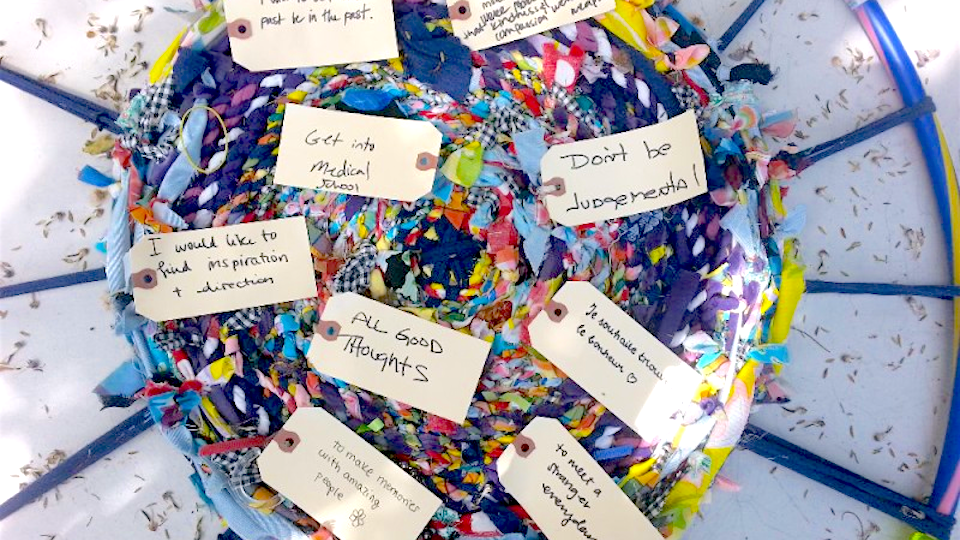From Pop-up Prayer, to smart cars for anti-narcissists: designing new rituals for secular people
A wish ritual constructed by Ritual Design Lab
Religions have long been the dominant suppliers of rituals, gamely stepping in with an answer to every question from How do I celebrate the birth of my baby boy? to How can I transfer my own sins onto a live chicken?
But in an age of increasing religious disaffiliation, these rituals now feel hollow to millions of people. And even when they don’t, there’s a wide range of new experiences for which the traditional rituals offer no script: How do I cope with my rage after receiving a parking ticket? How can I keep a smart car from exacerbating my loneliness and narcissism? What can I do to mourn the death of my laptop?
Although there is no single agreed-upon definition, a ritual is typically a deliberate action performed in a set sequence that improves our emotional state, by reframing an experience in a way that feels meaningful.
At the Ritual Design Lab in Silicon Valley, a small team of “interaction designers” is working to generate new rituals for modern life, with an eye to user experience. Created by Kursat Ozenc and Margaret Hagan, the lab crafts rituals for both individuals and organizations, including big hitters like Microsoft.
The team’s website offers a Ritual Design Hotline with a tantalizing promise: “You tell us your problem. We will make you a ritual.” Meanwhile, its Ritual Inventory [scroll to bottom of the page] invites you to add any interesting ritual you’ve made or seen to its growing database. And its app, IdeaPop, helps you brainstorm and create your own rituals.
Ritual Design Lab has its roots in Stanford’s Institute of Design, where Ozenc and Hagan both teach. In 2015, they proposed a new course on ritual design. To their surprise, more than 100 students signed up. Most were secular. “The interest was huge—so we thought, we should harness this interest,” Ozenc told me.
“The new generation, they want bite-size spirituality instead of a whole menu of courses. Design thinking can offer this, because the whole premise of design is human-centeredness. It can help people shape their spirituality based on their needs. Institutionalized religions somehow forget this—that at the center of any religion should be the person.”
More here. And see our threads on spirituality and religion in these blog posts. This grid is useful to lay out where a "secular ritual" might fit:
And here's some of their work on anticipating how we'll cope with self-driving cars - and what rituals and symbolisms we'll develop to make them human(e) experiences (see this report on Medium, and the anti-narcissist smart car plan below)
...And not forgetting Pop-Up Prayer - "using a design-centric strategy to innovate how to make it easier for people to integrate spirituality into their everyday lives. We both realized that we need to meet people where they are, and to give more well-designed support to help people integrate spirituality into their day-to-day work, travels, and busy-ness."





